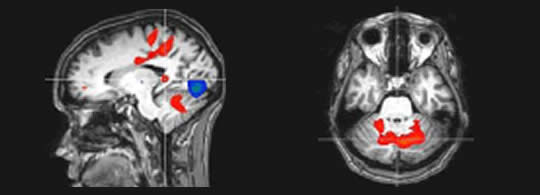Paper Beats Digital For Emotion

Direct mail is so last millenium, right? Ultra-efficient digital marketing seems all but certain to supplant actual paper marketing delivered by humans. It might be a little too soon to shut down the paper mills, though, according to a study by branding agency Millward Brown. The research project used fMRI brain scans to show that our brains process paper-based and digital marketing in different ways, and in particular that paper ads caused more emotional processing.
According to the study, physical media left a “deeper footprint” in the brain, even after for controlling for the increase in sensory processing for tangible items:
• Material shown on cards generated more activity within the area of the brain associated with the integration of visual and spatial information (the left and right parietal).
• This suggests that physical material is more “real” to the brain. It has a meaning, and a place. It is better connected to memory because it engages with its spatial memory networks. [From Millward Brown Case Study – Using Neuroscience to Understand the Role of Direct Mail.]
The study also found that the tangible materials involved more emotional processing in the subjects, important from a branding and ad recall standpoint:
• More processing is taking place in the right retrosplenial cortex when physical material is presented. This is involved in the processing of emotionally powerful stimuli and memory, which would suggest that the physical presentation may be generating more emotionally vivid memories.
• Physical activity generates increased activity in the cerebellum, which is associated with spatial and emotional processing (as well as motor activity) and is likely to be further evidence of enhanced emotional processing.
Before we get carried away and crank up the printing presses, a few limitations of the findings should be noted. The biggest is that a head-to-head comparison of similar digital and print ads may not represent most real-world marketing situations. Digital ads can do things that print ads can’t match, like this Halo ad from Unicast. Digital ads can build in video, audio, and interactivity. Furthermore, digital ads can be targeted far more effectively based on user interests (search and content), past behavior, and other characteristics that print can’t match.
Paper-based Marketing. As a long-time direct marketing guy, I’m happy to see that high-tech brain scans show that paper still has some advantages that bits can’t match. The Millward Brown study didn’t get into how to optimize a print piece, but here are a few quick ideas:
– Think about the tactile nature of the piece. Heavier stock and a textured finish could emphasize the “tangibility” of the mailed item.
– Take advantage of the brain’s emotional engagement with tangible media and craft a message that has an emotional impact.
– Build in your brand imagery, since brand recall may be enhanced by the paper medium.
Digital marketers, on the other hand, need to look beyond static banners that are little more than converted print ads. (The ubiquity of the term “banner blindness” is one clue about how ineffective many digital ads are.) I have little doubt that a comparison between a paper ad and a well-targeted, engaging, rich-media ad would at least even things up, if not tilt in the favor of digital. Digital ads have the potential to stimulate multiple senses, both surprise and interact with the viewer, and overall be very engaging. I’m confident that these strengths can offset the “tangible” advantages of paper for most applications.
